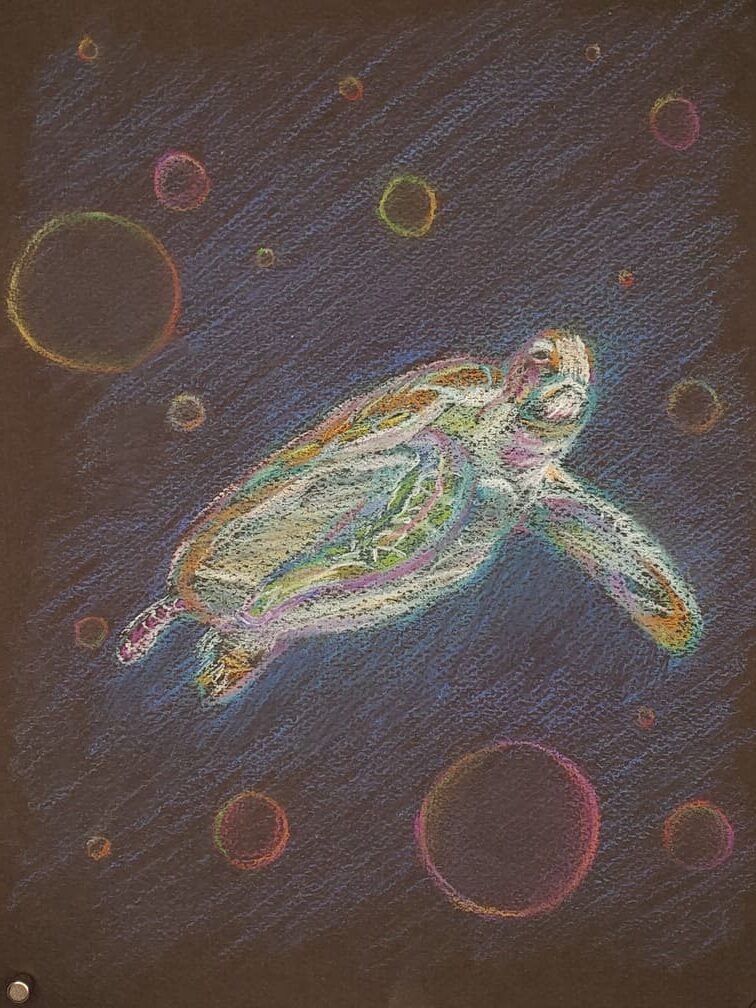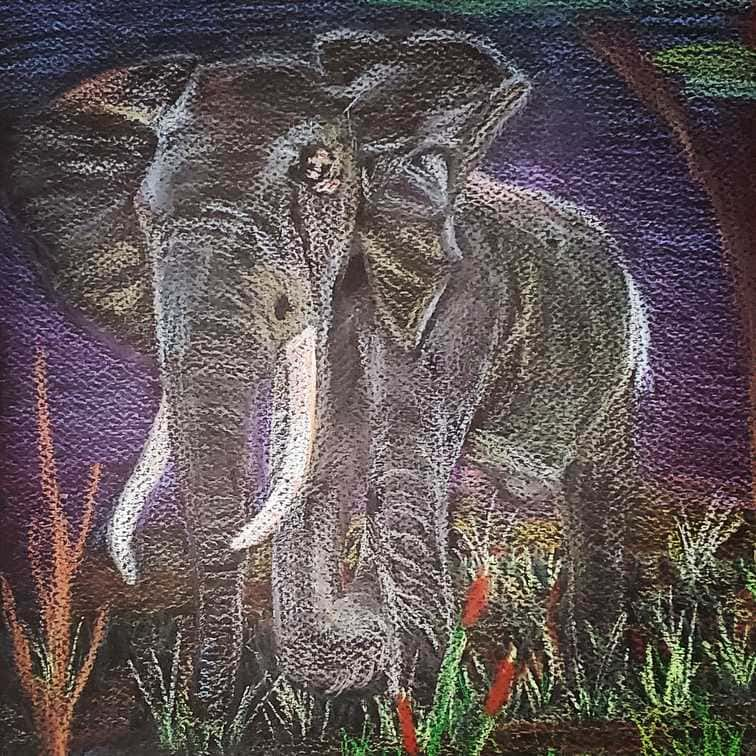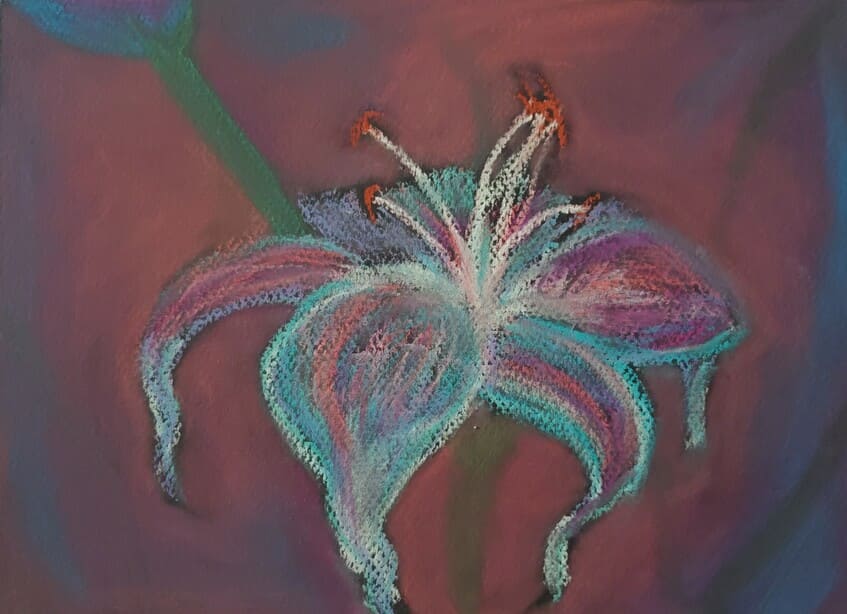In the recent weeks, I have been spending a lot of time with the new supplies in my studio, working on ink projects in my sketchbook for the month of October, Dealing with Disaster on my larger work in progress, and photographing work to make prints available for purchase in our shop. Currently, I have been enjoying creating African sunsets and oceanic scenes with a variety of pastels.
I have three types of pastels in my studio: Sennelier Soft Pastels, Prismacolor Nupastel Blocks, and Derwent Pastel Pencils. Each gives a different type of control to this “loose” medium.

The Sennelier Soft Pastels are chunks of soft pastels that give a rich layer of color with the gentlest touch to the paper. It goes down thick, smooth, and with little resistance. The colors are vibrant and beautiful, and the finished works have been very rewarding, though (as is the nature of soft pastel, chalks, or charcoal) messy and fragile and have to be protected immediately upon creation so as not to damage the work.

The Nupastel Blocks are a little different. These are rectangular compacted pastel sticks that resemble Conte Crayons or compressed charcoal blocks and have a level of control the Sennelier lack due to their design and hard edges. The pastels go down on the paper lighter and take a little more elbow grease to get the color to lay brightly and evenly on the paper. Their shape contributes to more control in details with less dust-fall than traditional soft pastels, giving a slightly less fragile piece of work. I also noticed my hands were cleaner after using these versus the Sennelier.

Derwent Pastel Pencils are a different animal on their own. Being wrapped in wood gives the pastels a sense of control and cleanliness and precision this medium usually lacks. There is minimal dust-fall with these pencils in comparison to traditional pastels, and though they keep their pastel qualities of blendability and vibrant color, they behave a lot like color pencils. These pencils can be sharpened to a point and used for the most intricate details in pastel work.
I have created a few pieces now with each of these methods of pastel and found them all unique and fun to use. Each piece is bright and vibrant, and the materials make delightful additions to the studio.
That being said, I would like to note the price differences between each of these materials. Because I enjoy them all so much, it is hard to give a solid recommendation on which is better to have in-studio, so ultimately I believe the decision on which to purchase would be left up to how much one is willing to spend on their supplies.
Derwent Pastel Pencils run at approximately $115 for 72 4mm core pencils in a tin box. I have a special love for pencils and the control I have with them, and on the same token, these are just that, pencils, and so take much more work to cover larger areas than their counterparts. Sennelier Soft Pastels cost approximately $151 for 80 half-stick pastels and a three-drawer wooden storage box, giving a special advantage to the order other offers do not (Being a pencil fanatic, I have bags for my pencil sets and use the drawers for the other pastels). Nupastel Blocks at Blick (non-affiliated) for a set of 96, manufacturer packaged pastels is priced for approximately $89, and fit well in the drawers of the storage box, which is available separately and with different drawer numbers (I ordered a second storage box for the studio—they are STACKABLE!!!).

